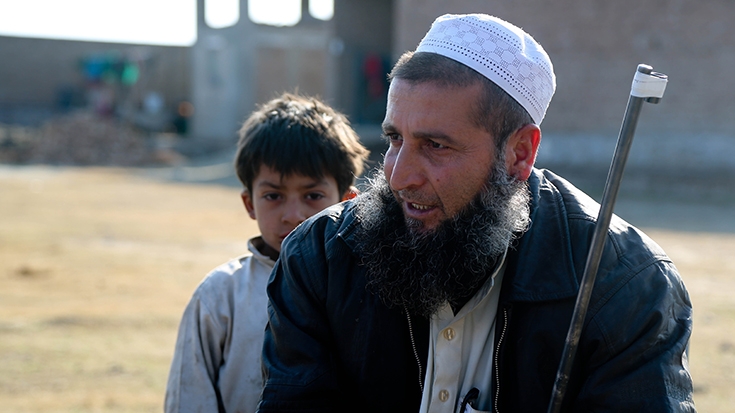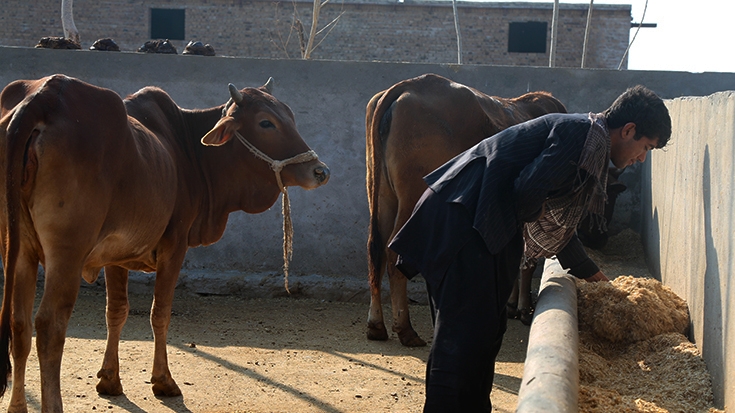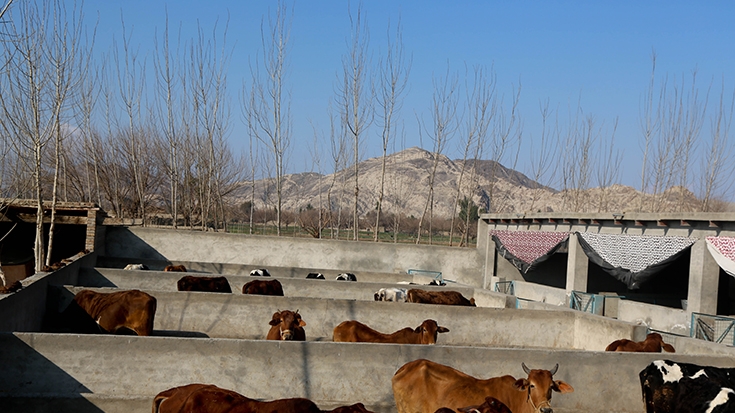BEHSOUD DISTRICT, Nangarhar Province –Abdul Hamid, 42, has learnt more in 12 months than he has ever had in over a decade of working in animal husbandry. Hamid, who was forced to close his own poultry business, now runs his uncle’s farm, increasing its income by a third.
Hamid says he has learned a significant amount about farming as a result of the training over the past year provided through the Afghanistan Rural Enterprise Development Program (AREDP), implemented by the Ministry of Rural Development and Rehabilitation.
“The AREDP training programs have been very useful to me,” he affirms. “Over the past year, I have learned more than in a decade of working and experiencing these issues. Now, in addition to managing my uncle’s farm, I am a trainer in programs in Kabul and Nangarhar Provinces.”
The AREDP receives funding support from the World Bank and Afghanistan Reconstruction Trust Fund (ARTF). Started in 2010, AREDP works towards strengthening market linkages and value chains for rural enterprises by providing technical support to over 1,400 Enterprise Groups (63 percent female) and 500 Small Medium Enterprises (14 percent female) that have been selected for their potential as key drivers of rural employment and income generation.
In January 2014, Hamid visited farms and received training in India through the AREDP. “In India, I saw modern farms and realized that in Afghanistan, we lag 20 years behind in poultry and cattle farming.” Hamid says.
It was this previous lack of knowledge on modern husbandry practices that led Hamid to close his own poultry business. “Because of financial losses, my poultry business was shut down prior to my trip to India and I lost more than 900,000 Afghanis (almost $16,000). But now, on my uncle’s farm, I have started the business more forcefully,” he says.



